By Nii B. Andrews.
The work of two artists at the ongoing Tate exhibition, “A World in Common: Contemporary African Photography”, enables us to reflect on the convergence of clothing, textile waste and culture in contemporary Africa.
George Osodi in his “NIGERIAN MONARCH” series provides photographs of traditional African royals in regalia.
The composition of their clothing which they decided to showcase themselves raises many questions especially when viewed against the oft stated cliché of their “incredibly important role within their society as custodians of cultural heritage”.
Which aspect of this role pushes them to wear an Agbada robe made with a textile that has a British Queen’s face on it?

****George Osodi, HRM Agbogidi Obi James Ikechukwu Anyasi ll, Obi of Idumuje Unor (in Palace) 2012, “Nigerian Monarchs.” Photo courtesy of the artist.*****
Again how do we reconcile their being seated on dodgy replicas of furniture from Versailles while dressed in traditional robes?
If these ensembles are not costumes and they, the individuals, are not models, we can be forgiven for thinking that they therefore misrepresent the actual grandeur and absolute majesty of the traditional regalia.
It is again from this perspective that the work of Zohra Opoku from her 2017 series “QUEENS AND KINGS” at the same exhibition gains particular poignancy.
Opoku took photos of members of her paternal lineage who she informs us are royals.

****HRM Benjamin Ikenchucku Keagborekuzi I, The Dein of Agbor Kingdom, 2012 by George Osodi. Courtesy of George Osodi and Tafeta****
They were wearing secondhand T-shirts which she screen-printed onto recycled materials, with leaves covering their faces and Kente cloth patterns visible elsewhere in the piece.
Once again, we are confronted with several questions.
First, what is happening with the technical evolution of the individual 4 inch strip wholly hand woven iconic Kente cloths hand stitched from 60 to 144 sq feet thus showcasing indigenous superlative textile artistry in silk and cotton?
Second, are the modern versions made from nylon, rayon and polyester of the same quality?
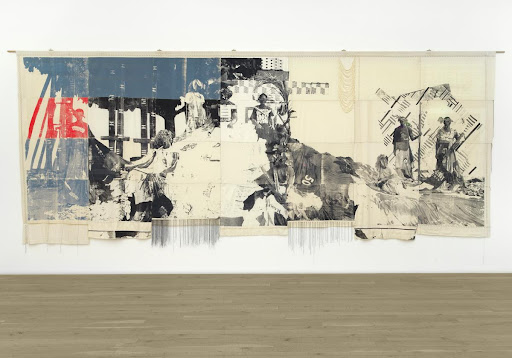
****Zohra Opoku, Queens and Kings, Screenprint on cotton, cotton and textile, 3695 x 8211 mm, 2017****
Third, what about the “cut and paste” versions that feature large embroidered segments often consisting of Adinkra symbols?
Fourth, and the millions of pieces of discarded clothing “donated” from Europe monthly are they also part of our heritage being preserved by the purported custodians of our culture?
There is already considerable evidence that the hand woven tradition of the magnificent tapestries – the classic kente, is rapidly being lost; elderly master weavers are transitioning without passing on their skills; old looms are being destroyed.
The deleterious nexus of imports of textile waste to Ghana, the legacies of traditional Ghanaian attire, and globalisation have become evident.
Opoku asks, “What happens to our identity when the clothes are changed?”
Another urgent question is “What happens to our identity when THE CLOTH is changed?”
Obviously, the answer is complicated and can only be addressed after a thorough perspective on what the hand woven kente cloth fully represents; it is the cloth of life.
Another Ghanaian artist – Owura Opoku (no relation to Zohra Opoku), has provided a comprehensive and stimulating exegesis of the KENTE UNIVERSE/ KENTEVERSE that can be accessed here: https://youtu.be/2sMfB7hWb3o
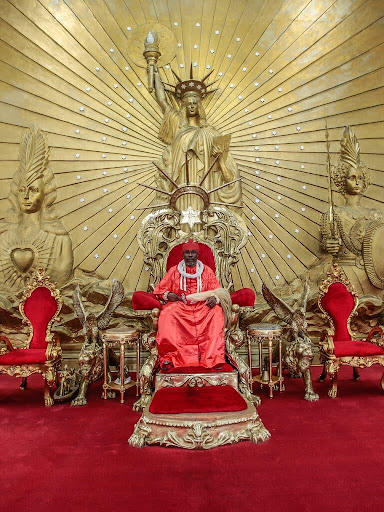
Osodi’s “Pere of Gbaramatu. His Imperial Majesty, Oboro Gbaraun II, Aketekpe, Agadagba.”Credit…George Osodi; via TAFETA
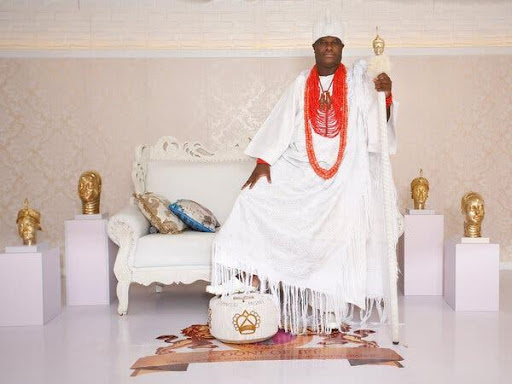
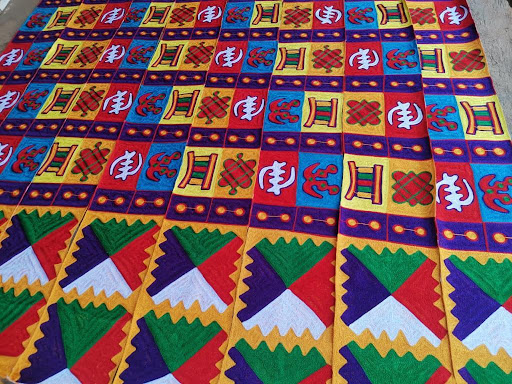
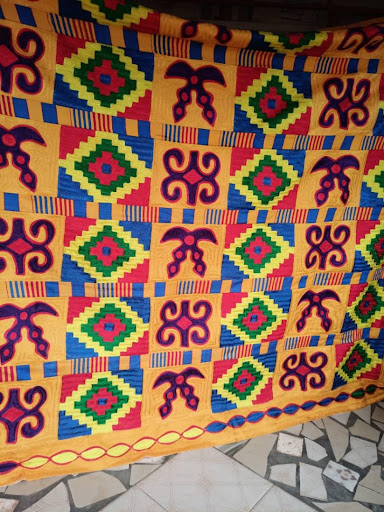
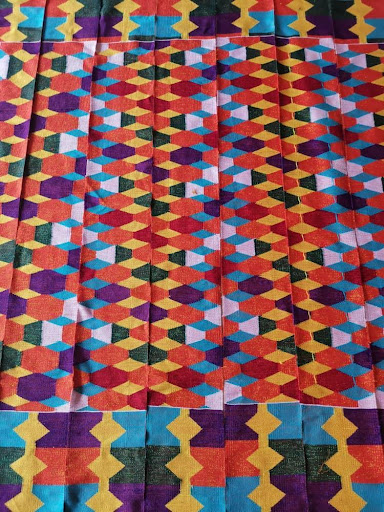
ABOVE are 3 examples of the modern style. Photos courtesy of Pilato.
BELOW are 3 examples of the classic style. Photos courtesy of Pilato.
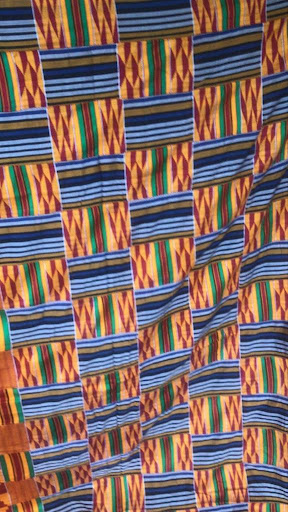
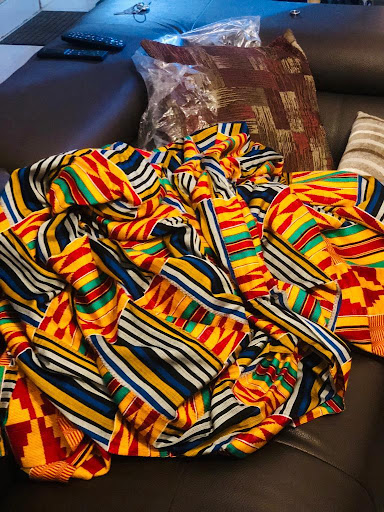
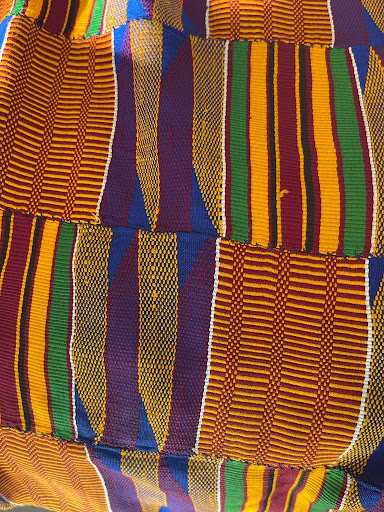
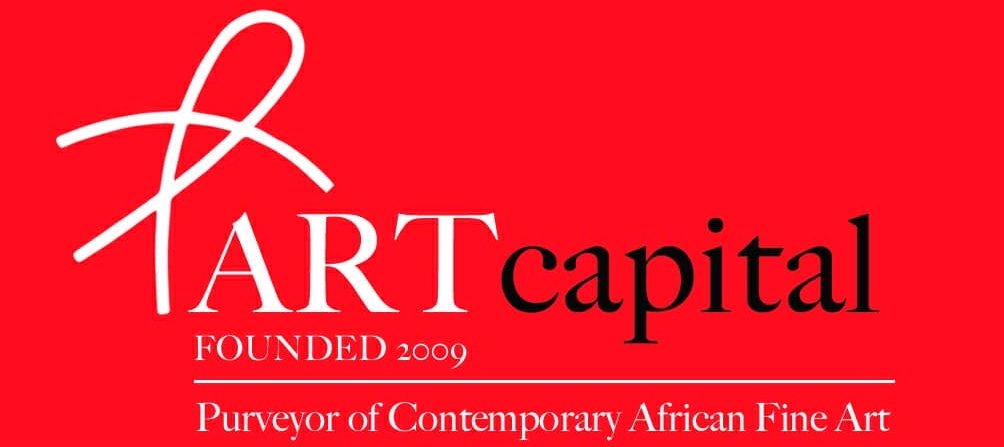
Great piece for reflection. Some parts funny and sad at the same time.
The article raises many interesting questions! Thanks for sharing.
Good morning dear Nii Bonney, this is excellent. Interesting that the musee du quai Branly (African and oceanic museum) in Paris is featuring an expo on African commemorative prints.